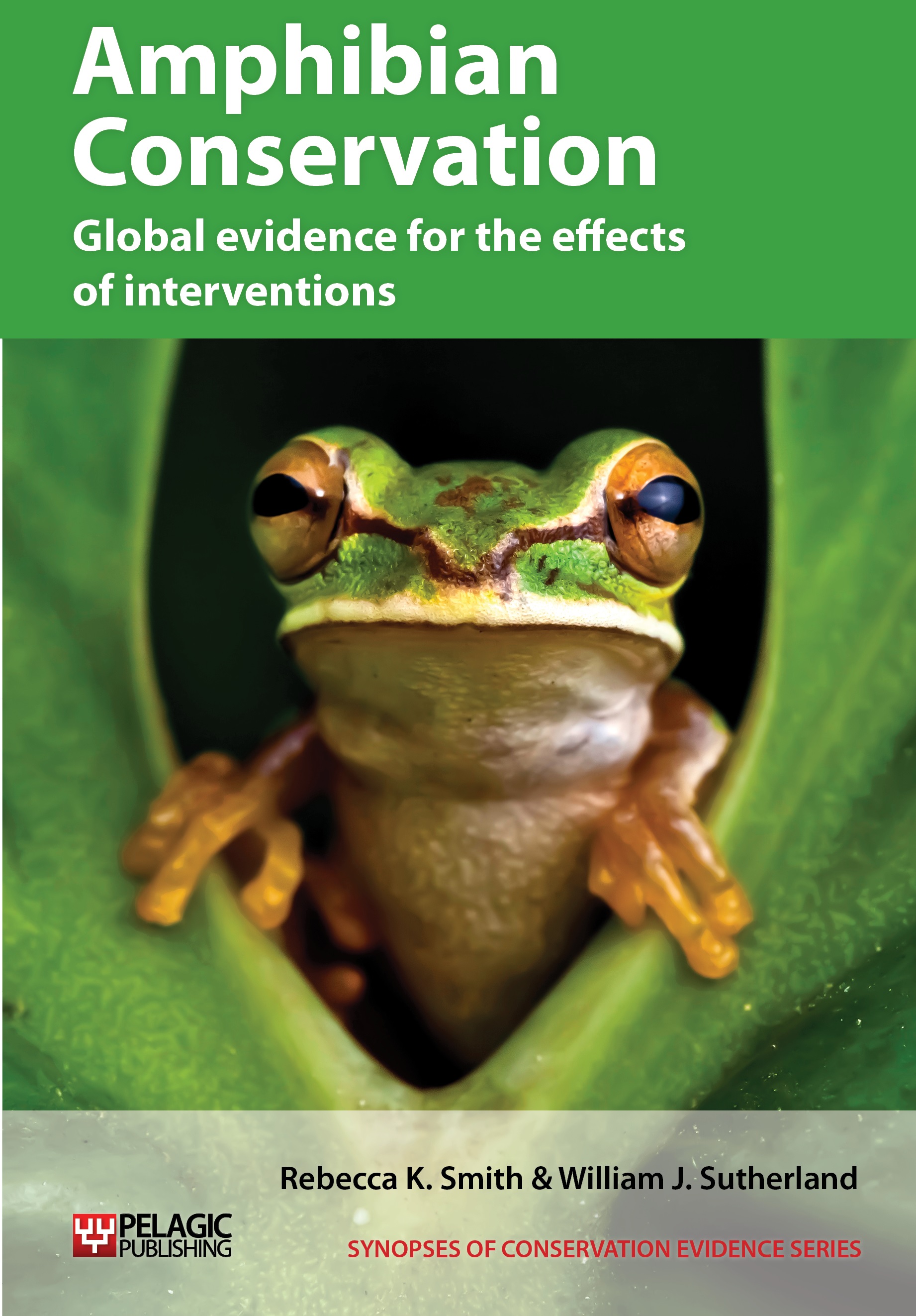Actions to conserve biodiversity
We have summarised evidence from the scientific literature about the effects of actions to conserve wildlife and ecosystems.
Review the evidence from the studies
Not sure what Actions are? Read a brief description.
Search for evidence
e.g. "frogs chytrid"
130 Actions found
Refine
Hide
130 Actions found
Download Actions
| 0 selected |
|
Order results by:
| Action | Effectiveness | Studies | Category | |
|---|---|---|---|---|
|
Create ponds for natterjack toads Action Link |
Beneficial | 6 |
|
|
|
Create ponds for salamanders (including newts) Action Link |
Beneficial | 5 |
|
|
|
Create ponds for toads Action Link |
Likely to be beneficial | 7 |
|
|
|
Create refuge areas in aquatic habitats Action Link |
No evidence found (no assessment) | 0 |
|
|
|
Create refuges Action Link |
Likely to be beneficial | 7 |
|
|
|
Create walls or barriers to exclude pollutants Action Link |
Unknown effectiveness (limited evidence) | 1 |
|
|
|
Create wetland Action Link |
Beneficial | 15 |
|
|
|
Deepen ponds to prevent desiccation Action Link |
Evidence not assessed | 0 |
|
|
|
Deepen, de-silt or re-profile ponds Action Link |
Beneficial | 9 |
|
|
|
Encourage aquatic plant growth as refuge against fish predation Action Link |
No evidence found (no assessment) | 0 |
|
|
|
Engage landowners and other volunteers to manage land for amphibians Action Link |
Likely to be beneficial | 8 |
|
|
|
Engage volunteers to collect amphibian data (citizen science) Action Link |
Likely to be beneficial | 7 |
|
|
|
Exclude domestic animals or wild hogs by fencing Action Link |
Likely to be ineffective or harmful | 5 |
|
|
|
Exclude fish with barriers Action Link |
Unknown effectiveness (limited evidence) | 1 |
|
|
|
Freeze sperm or eggs for future use Action Link |
Unlikely to be beneficial | 10 |
|
|
|
Harvest groups of trees instead of clearcutting Action Link |
Likely to be ineffective or harmful | 5 |
|
|
|
Head-start amphibians for release Action Link |
Trade-off between benefit and harms | 25 |
|
|
|
Immunize amphibians against chytridiomycosis infection Action Link |
Unknown effectiveness (limited evidence) | 1 |
|
|
|
Install barrier fencing along roads Action Link |
Trade-off between benefit and harms | 10 |
|
|
|
Install culverts or tunnels as road crossings Action Link |
Trade-off between benefit and harms | 32 |
|
|
|
Leave coarse woody debris in forests Action Link |
Trade-off between benefit and harms | 7 |
|
|
|
Leave standing deadwood/snags in forests Action Link |
Unlikely to be beneficial | 4 |
|
|
|
Legal protection of species Action Link |
Unknown effectiveness (limited evidence) | 5 |
|
|
|
Maintain ephemeral ponds Action Link |
Evidence not assessed | 0 |
|
|
|
Maintain or restore hedges Action Link |
No evidence found (no assessment) | 0 |
|
Download Actions
| 0 selected |
|

Amphibian Conservation - Published 2014
Amphibian Synopsis
Watch this search
If you are familiar with RSS feeds, please click the button below to retrieve the feed URL:
RSS feed for this searchIf you are unfamiliar with RSS feeds, we would suggest reading this BBC article.
Unfortunately, due to the number of feeds we have available, we cannot provide e-mail updates. However, you could use tools such as Feed My Inbox to do this for you.
What are 'Individual studies' and 'Actions'?
Individual studies
An individual study is a summary of a specific scientific study, usually taken from a scientific journal, but also from other resources such as reports. It tells you the background context, the action(s) taken and their consequences.
If you want more detail please look at the original reference.
Actions
Each action page focuses on a particular action you could take to benefit wildlife or ecosystems.
It contains brief (150-200 word) descriptions of relevant studies (context, action(s) taken and their consequences) and one or more key messages.
Key messages show the extent and main conclusions of the available evidence. Using links within key messages, you can look at the paragraphs describing each study to get more detail. Each paragraph allows you to assess the quality of the evidence and how relevant it is to your situation.
Where we found no evidence, we have been unable to assess whether or not an intervention is effective or has any harmful impacts.





)_2023.JPG)














